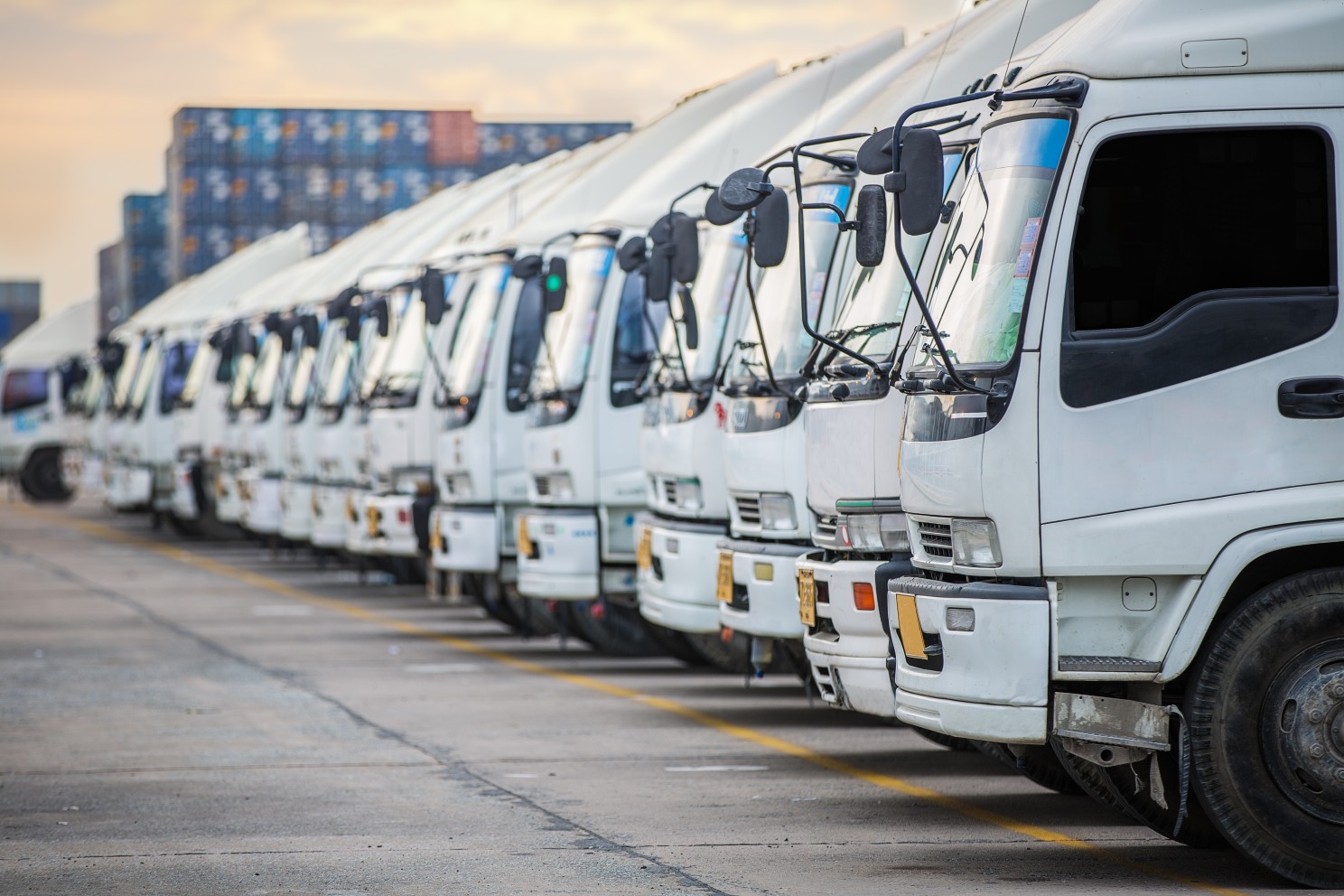
Susie Jones
Vodiči nákladných vozidiel spochybňujú pojem "nedostatok vodičov"
Vytvorené: 15. 08. 2024
•
Aktualizované: 18. 12. 2024
Dňa 11. apríla 2024 DfT otvorilo konzultácie o opatreniach na zmiernenie nedostatku vodičov. Hľadajú sa návrhy, ktoré by umožnili osobe absolvovať teoretické a terénne manévrové skúšky pred udelením dočasného oprávnenia vodiča nákladného vozidla.
Od Covid-19 a Brexitu zaznamenalo odvetvie pokles vodičov nákladných vozidiel. Pandémia oneskorila 30 000 testov pre nových vodičov a brexit tvrdo zasiahol flotilové spoločnosti - mnohí európski vodiči nákladných vozidiel opustili Spojené kráľovstvo.
V správe SNAP z roku 2023 sa uvádza, že tento sektor by mohol v nasledujúcich 10 až 15 rokoch dosiahnuť "bod zvratu". Vzhľadom na rýchly posun v odvetví sú online objednávky jednou z najrýchlejšie rastúcich požiadaviek - v kombinácii so starnúcou pracovnou silou potreby odvetvia prerastú nedostatok kvalifikovaných vodičov.
Čo si myslia vodiči nákladných vozidiel?
SNAP vyzval vodičov na sociálnych sieťach, aby vyjadrili svoj názor na návrh, ktorý predložilo ministerstvo dopravy. Mnohí vodiči sa k systému nevyjadrili, 72,5 % však spochybnilo termín "nedostatok vodičov" a označilo ho za strašenie.
Namiesto toho uviedli, že skúsení vodiči opúšťajú odvetvie a spolu s tým odrádzajú nových uchádzačov:
Mzdy
Zo 72,5 % respondentov 28 % uviedlo, že nízka mzda je odstrašujúcim faktorom. Vodiči na stránkach sociálnych médií SNAP naznačili, že by mohli zarábať viac v rôznych profesiách:
"Mám vodičský preukaz na nákladné vozidlá, ale nemám chuť ho používať. V súčasnosti zarábam viac na hodinu ako inštruktor autoškoly. Vôbec nejde o nedostatok vodičov. "
"Plaťte vodičom viac peňazí a poskytnite im lepšie vybavenie. "
V súvislosti s platmi vodičov nákladných vozidiel v Spojenom kráľovstve sa vyskytli mylné názory, že vodiči nákladných vozidiel zarábajú viac ako priemerný pracovník. Podľa National Careers je priemerný plat vodiča nákladného vozidla v Spojenom kráľovstve 22 000 až 40 000 libier - pričom skúsení vodiči zarábajú najvyššie.

Zariadenia
Mnohí sa zamerali aj na zariadenia - 20 % z nich obviňovalo zlé štandardy z toho, že odháňajú kvalifikovaných vodičov. Úroveň vybavenia zastávok pre nákladné vozidlá v Spojenom kráľovstve bola predmetom veľkej kontroly zo strany pracovníkov v tomto odvetví, pričom mnohí tvrdili, že nestojí za tie peniaze.
Ministerstvo dopravy prijalo významné opatrenia v podobe grantového programu [Parkovanie nákladných vozidiel a starostlivosť o vodičov] v hodnote 6 miliónov GBP(https://www.smmt.co.uk/2024/05/first-class-facilities-truckstops-to-be-upgraded-with-16-5m-funding/#:~:text=Under%20the%20plans%2C%2038%20truckstops,significantly%20upgrade%20facilities%20for%20drivers.) - GBP, ktorý bol podporený ďalšími 10,5 mil. V rámci tohto programu sa bude investovať do 38 zastávok pre nákladné vozidlá v Anglicku s cieľom modernizovať zariadenia pre vodičov vrátane nových spŕch a reštaurácií, ako aj lepšej bezpečnosti.
Okrem modernizácie zariadení sa v rámci tohto programu vytvorí približne 430 nových parkovacích miest pre nákladné vozidlá, čo povedie k zníženiu počtu odstavných parkovacích miest a k zaplneniu parkovísk do skorého večera.
Nedostatok práce
Rovnako 20 % vodičov vysvetlilo, že majú vodičský preukaz, ale nemôžu si nájsť prácu. Podľa Národného štatistického úradu (ONS) je v Spojenom kráľovstve viac ako 183 000 pracovných miest pre vodičov nákladných vozidiel. Napriek tomu sú v každom regióne iné pracovné príležitosti, čo vedie k nerovnomernému dopytu v celom Spojenom kráľovstve. Viacerí vodiči sa podelili o svoje skúsenosti s problémami pri hľadaní práce:
"Už sedem mesiacov som v prvej triede a nemôžem si nájsť prácu. Rád by som vedel, kde je ten nedostatok. "
"Aký nedostatok? Veď nie je veľa práce. "
Osvedčenie o odbornej spôsobilosti vodiča
10 % respondentov, ktorí nesúhlasili ani nesúhlasili s pojmom "nedostatok vodičov", uviedlo, že Osvedčenie o odbornej spôsobilosti vodičov (CPC) zohralo rozhodujúcu úlohu pri znížení počtu vodičov nákladných vozidiel.
Cieľom CPC, ktorý bol zavedený v roku 2009, je zvýšiť bezpečnosť na cestách, profesionalitu a environmentálne povedomie, a tiež zabezpečiť, aby vodiči dodržiavali všetky zdravotné, bezpečnostné a právne požiadavky. Z výsledkov konzultácie týkajúcej sa revízie politiky CPC vyplynulo, že 47 % vodičov nákladných vozidiel uviedlo, že je neúčinná alebo veľmi neúčinná. Zo sociálnych médií SNAP sa jeden vodič vyjadril:
*"Zbavte sa CPC a ja budem nastupovať na zmeny. Nebudem platiť za to, že budem robiť 35 hodín a naučím sa robiť to, čo som predtým robil roky každý deň." *
Vláda načrtla sériu zmien v CPC s cieľom zvýšiť flexibilitu pri obnovovaní a opätovnom získavaní kvalifikácie. Okrem zmien dĺžky kurzu vláda spolu s Agentúrou pre štandardy vodičov a vozidiel vypracuje viac základného obsahu kurzu.
Vonkajšie faktory, ako napríklad brexit a COVID-19, v kombinácii s problémami súvisiacimi s odvetvím, výrazne ovplyvnili mieru zamestnanosti v sektore nákladnej dopravy. V neustále sa vyvíjajúcom prostredí musí odvetvie pokračovať v potrebných zmenách, aby prilákalo a udržalo si viac vodičov.
O službe SNAP
SNAP je digitálne trhovisko, ktoré spája cesty vozového parku zo skladu do cieľa v celej Európe prostredníctvom technológie, bezpečnosti a rozsiahlej európskej siete.
Službu využíva každých 13 sekúnd jeden z viac ako 190 000 vodičov nákladných vozidiel, ktorí používajú platobný systém SNAP. Transakcie sa uskutočňujú v sieti viac ako 600 servisných partnerov pre nákladné vozidlá v celej Európe. Zaregistrujte sa bezplatne



